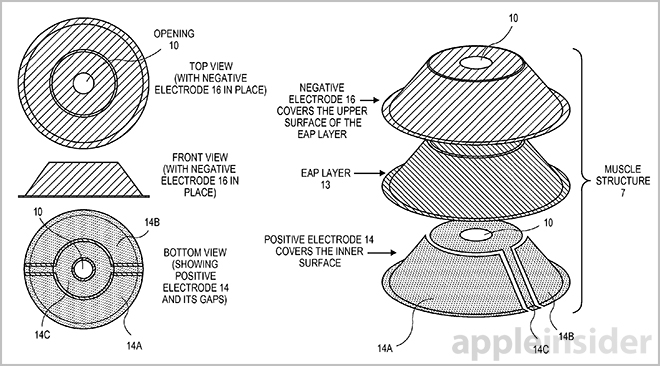
Apple Uses Artificial Muscle to Build iPhone Camera Lens Actuator
A new Apple patent application published today by the U.S. Patent and Trademark Office reveals a method of constructing a camera lens actuator that uses a single artificial muscle, AppleInsider reports. The filing titled “Artificial muscle camera lens actuator” replaces traditional motors with an artificial muscle structure to control focus and aperture size on an iPhone camera lens.

Apple basically proposes a micro electromechanical system (MEMS) design using an electro-active polymer (EAP) layer. At at the tip of the artificial muscle structure lies an opening to be used as the camera’s aperture, which can be displaced via electrodes attached onto the front and back of the EAP layer. The layer itself can include one or more layers of polymer material sandwiched together between the two flexible electrodes.
“Taking a closer look at the artificial muscle structure, the image below illustrates how both displacement and variable aperture control can be achieved in a single mechanism. The formation places a positive electrode on the inside of the EAP layer with a gap running from its base to the tip, splitting it into two separate actuation segments that control lens barrel movement.
A third electrode is placed within the created gap so that an aperture created in the EAP material can be variably controlled by changing the electrode’s potential independently of the two actuation segments. Alternatively, aperture size may be controlled by changing the potentials on the two actuation segments relative to the third electrode.“

The filing also highlights the benefits of using an artificial muscle structure, noting that it consumes extremely low levels of power while carrying relatively large optics.

